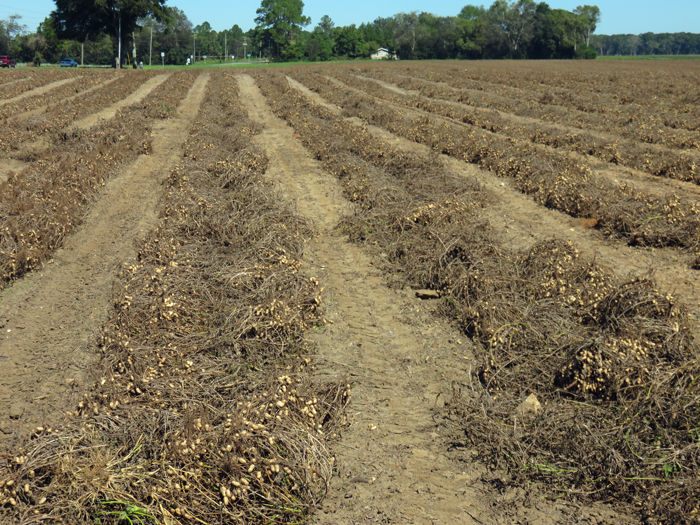Our hearts are saddened by the preliminary reports coming from South Carolina after more than a week of constant and heavy rains in the region. Hugh Weathers, South Carolina Commissioner for Agriculture issued a preliminary report from initial damage assessments:
Conservative early estimates are that direct crop losses from the recent flood may exceed $300 million. The storm had a significant statewide effect, and it appears that low lying farmland adjacent to rivers systems and creeks was most severely impacted. The crops affected include peanuts, cotton, fall vegetables, soybeans, and some timber. Poultry farmers are working to repair access roads to get feed trucks to their flocks. Livestock and poultry assessments continue in impacted areas. Timber harvest will resume when the logging roads are passable. Long-term, this disaster will cause major income loss for local farmers and the rural counties of South Carolina. 2015 has been an exceptionally challenging year for farmers in our state. We have dealt with a severe drought during the growing season and now excessive rainfall at harvest. Efforts will continue to gauge losses through the completion of harvest season.

While farmers in the region saw much lower rainfall totals than the 1.5 – 2 feet of rain that fell in South Carolina, parts of Walton, Holmes, Washington, and Jackson Counties received between 6-12 inches over the past two weeks, as can be seen in the graphic above. The same weather system that impacted South Carolina hovered and churned over the Panhandle as well. Weather forecasts ahead of the tropical wave predicted 3-5 days of rainfall for the Panhandle followed by a cold front passing through and drying things out again. In addition to the actual rainfall, however, a longer than predicted period of cloudy, cool and damp weather delayed peanut and cotton harvest for 10-14 days. This sort of weather issue at harvest is really challenging. Farmers were faced with a difficult decision of either digging up peanuts or waiting out the rain and leaving them in the ground to mature further. Digging them up protects the yield by preventing the most mature, heaviest peanuts from breaking off of the vine and staying in the ground at digging. Waiting out the rain before digging protects the quality, or grade of the peanuts.
Jackson County peanuts dug ahead of the tropical wave sat for 12 days waiting on sunshine to dry the field. Photo credit: Doug Mayo
Most of the local farmers went ahead and dug their more mature peanut fields before the rain moved in. Thousands of acres of peanuts were dug on September 25th and 26th as their early planted peanuts were already at the 140 day maturity mark since planting. The two week harvest delay will have a negative effect on their peanut yields and especially their quality. How much damage is still to be determined, but a guess from one local farmer was 10-20% yield loss with some 8-10 points in reduction in grade.
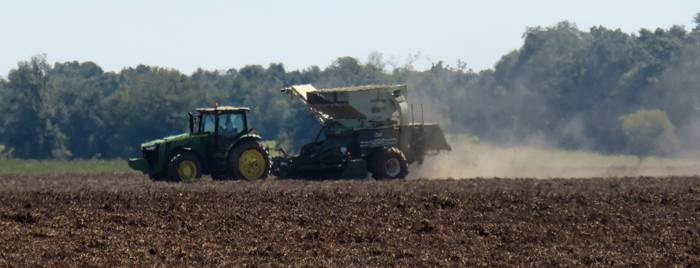
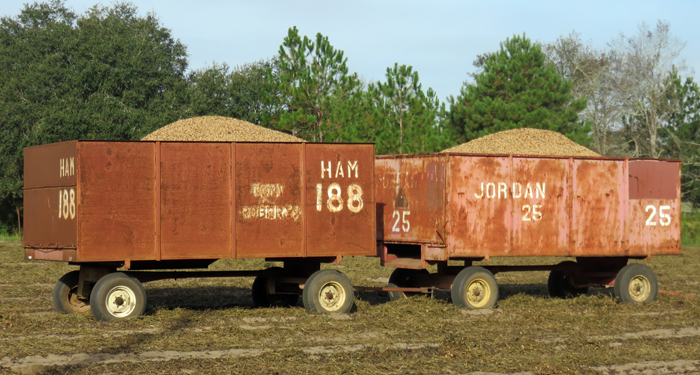
Most cotton fields have not been defoliated yet, but there were some that were ahead of the tropical system that have begun to re-sprout leaves and will need another dose of defoliant prior to harvest. The peanut harvest delay will push cotton harvest back as well, as most farms focus first on peanuts and then shift to cotton harvest. Farm crews will be working long hours for the next month trying to make up for lost time.
Hay harvest has also been delayed with the cloudy, damp weather. With the short days of fall however, the grass growth is much slower, so most farms should still have ample time to gather their hay before frost. Even so, farmers have endured two weeks of frustration waiting for clear dry weather to get going again, with winter grazing still needing to be planted.
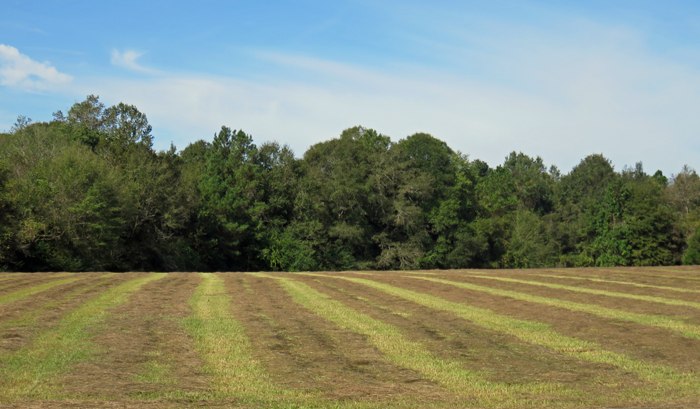
After nearly two weeks of cloudy and rainy weather, the sun finally started shinning again on Wednesday. Peanut fluffers, diggers and pickers were once again hitting the fields. Hay mowers were buzzing through fields with forages rejuvenated by the rainfall. Peanut wagons and semi-trucks were loaded and headed to buying points all across the county.

While two weeks of frustration adds pressure to try to catch up, everyone I met this week had a smile on their face as the sun had returned and October was once again harvest season. There is just something special about the harvest. Seeing the results of a year of work and sharing with the folks you meet, before dashing back to work again. While the pressure is on to get the crops in, farmers in Jackson County are just happy to finally have nice weather again, so they can finish the job and get the crops to market.
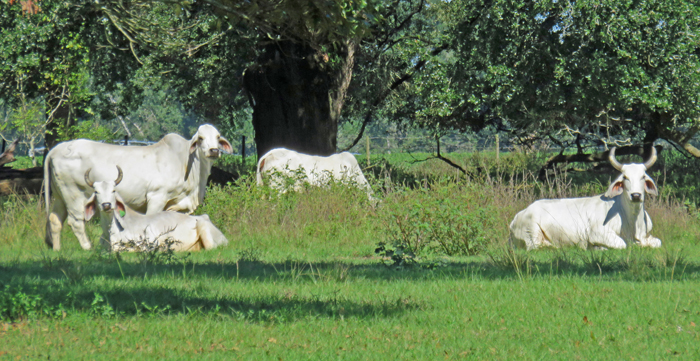
 0
0
